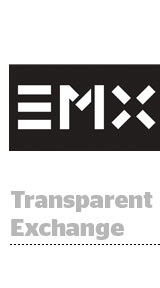
The EMX exchange, operated by the agency holding company Engine, is offering buyers the ability to transact on its exchange with a flat, transparent buy-side fee.
The sliding scale model will allow clients, agencies and DSPs to pay more or less depending on volume commitments. So a buyer may decide to spend more on the exchange in order to secure a lower price, a form of supply path optimization.
“Supply path optimization is a significant use case for this product,” said Engine Global CEO Kasha Cacy. “[Buyers] can minimize the fees and maximize the dollars. And you are going to get a performance lift because on a dollar-by-dollar basis, more is going to media instead of fees.”
EMX will continue to offer buyers open marketplace and private marketplace offerings with a more traditional, non-transparent pricing structure. In that model, exchanges negotiate confidential sell-side fees on a per-publisher basis that buyers may not be able to see.
Launching a third, transparent marketplace allows the exchange to make its fee model simpler and transparent without having to individually renegotiate contracts – a process that’s taken another exchange, AppNexus, over a year to do.
“Some clients want transparent models, others performance-based models,” Cacy said. “We are building a portfolio of products that will meet the needs of clients no matter what they want to buy.”
No clients are piloting the transparent EMX platform just yet. But EMX counts Frito Lay and Lincoln among the buyers of its broader exchange offering.
EMX itself is in the midst of reorganization and re-engineering of its platforms. Engine combined bRealTime, an SSP it had acquired, with Clearstream, a managed video DSP, in May of this year and renamed the platform EMX. Meanwhile, bRealTime, which had built its technology on top of third parties before, started over and rebuilt its tech from scratch over the past 18 months.
“The primary motivator is to manage their own destiny, and the best way to do that is to have technological independence,” said EMX Digital CEO Michael Zacharski, former CEO of bRealTime. The new tech also better handles large volumes of data and queries per second, a must in the age of header bidding.
After ads.txt, many publishers culled the partners they worked with. EMX retains a strong publisher base, counting 1,000 direct publishers, including USA Today Sports Media Group, Trusted Media Brands and Penske Media. Ten thousand domains list EMX in their ads.txt file as a partner.
Because EMX isn’t owned by a publisher or media source, it believes it offers buyers a more independent alternative. It’s betting the combination of transparency and independence will attract clients who value those attributes. “We think that’s a differentiator, and having an exchange that it not connected to an inventory source is an important thing for the industry,” Cacy said.
This post was syndicated from Ad Exchanger.


More Stories
Unbound joins HubSpot for elite client data
Citigroup Scales Back DEI Initiatives
Ticker: CBS News Tweaks Format of CBS Evening News